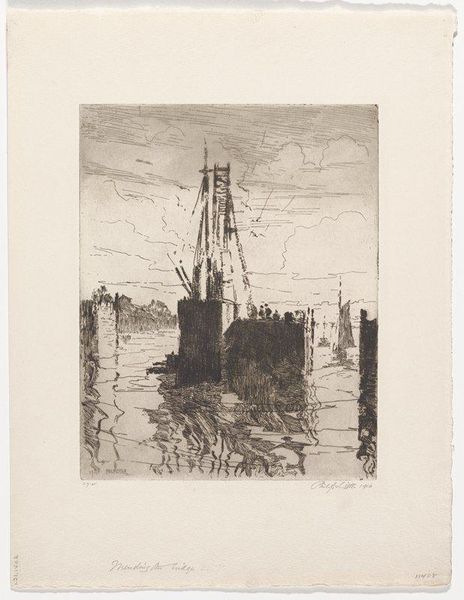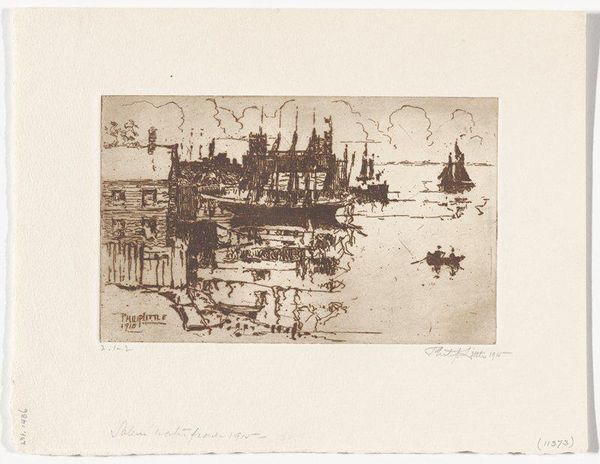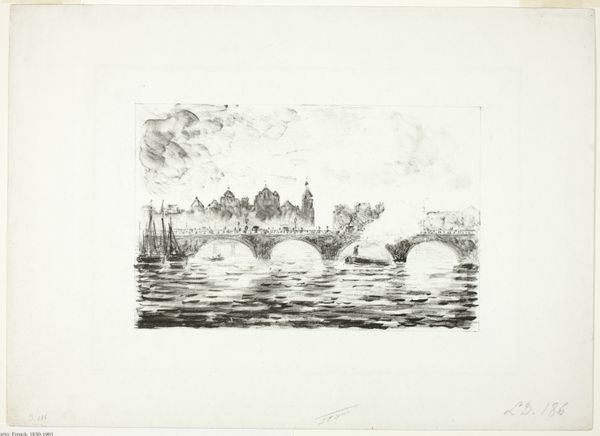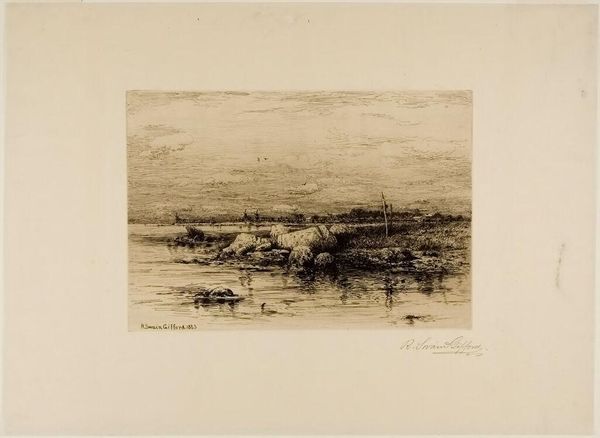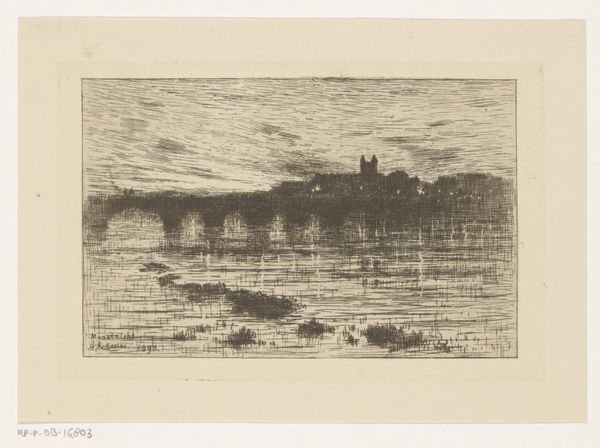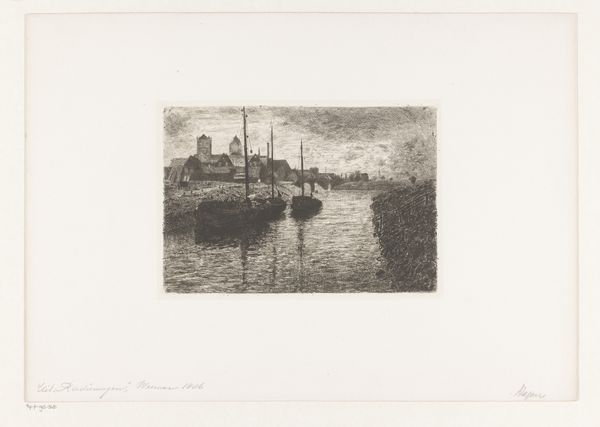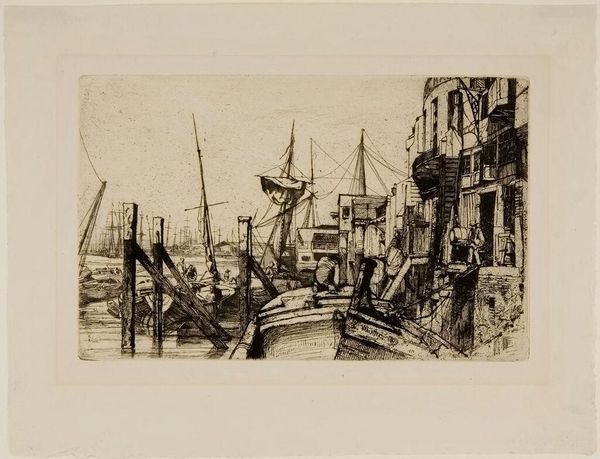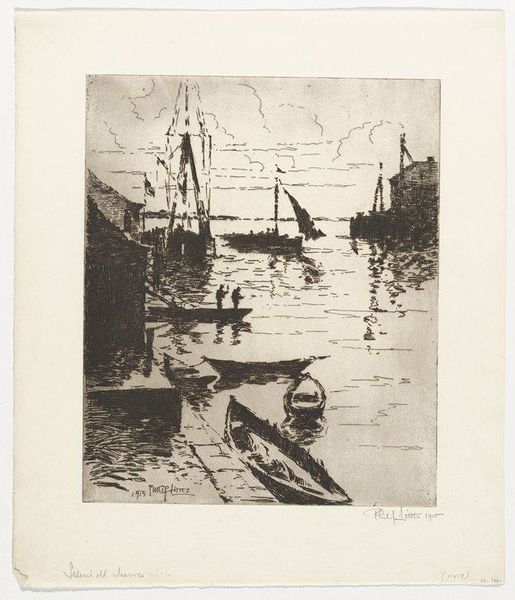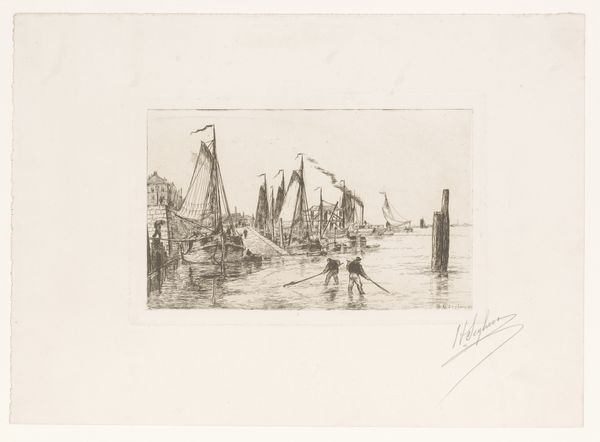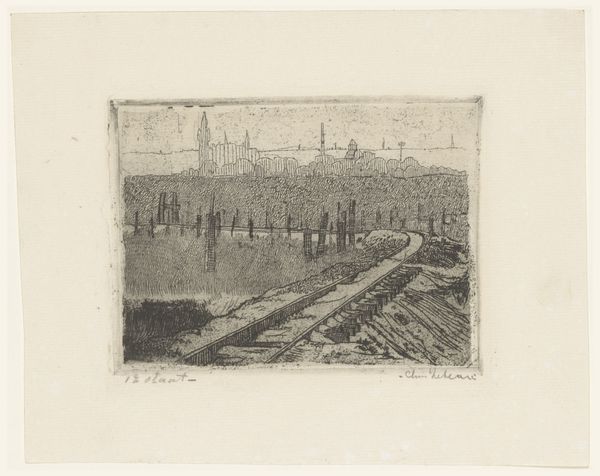
print, etching
# print
#
etching
#
landscape
#
cityscape
Dimensions: 7 7/16 × 9 in. (18.89 × 22.9 cm) (plate)9 13/16 × 12 3/4 in. (24.92 × 32.39 cm) (sheet)
Copyright: No Copyright - United States
Curator: Let's take a moment to consider Maximilien Luce's "A Canal in Dordrecht," an etching created around 1907, here in the collection of the Minneapolis Institute of Art. What are your initial thoughts? Editor: Oh, wow. It’s incredibly atmospheric, almost like a memory fading at the edges. It gives me a ghostly feel. Curator: The medium certainly contributes to that. Etching allowed Luce to achieve a range of tonal values, from deep blacks to delicate grays, reflecting the subtle gradations of light. And it recalls older printmaking styles. Editor: Exactly! I notice how the dense hatching creates that depth in the darks and shadows of the structure, giving the water such a gorgeous sheen in comparison. And those almost aggressively placed splatters—intentional? Curator: Likely! Many etchers used stopping-out varnish to create textures, blocking acid from further biting into the plate. That central structure, its imposing height is an intentional artistic choice. Consider how industrialisation altered perception of urban space in the early 20th Century and it becomes interesting. Editor: Yeah! With all that grey and darkness and, honestly, slightly wonky perspective. It actually pulls me in. And I think I actually like the uneven edges. It doesn’t try to be picture-perfect, like life in a port can be raw and unfinished sometimes. I think maybe Luce saw a unique story within. Curator: Precisely. His connection with Neo-Impressionism often linked him with his anarchist leanings in his social portraiture. Although this artwork is devoid of people, Luce focuses here on the working life, of the structures used in dock labor, of transport on the water... Editor: Well, whatever the specific inspiration was, I really enjoy this print's melancholic feel. It leaves room to bring my own feelings to it. Curator: I think you have a point about bringing your own feelings to a piece like this. This etching can serve as a mirror, reflecting both its time and the emotions of whoever stands before it today. Editor: Beautiful. I think Luce succeeded there!
Comments
minneapolisinstituteofart almost 2 years ago
⋮
Maximilien Luce was trained as a wood engraver, but technological advances rendered his trade obsolete. He turned to painting full time and became perhaps the most prolific French Neo-impressionist artist. Art critic Félix Fénéon characterized him as a "coarse, honest man, with a rough and muscular talent," traits one might find in this view of Dordrecht. Here thick patches of drypoint burr dominate the softly lit view along the water. The dusky light plays over the buildings and tree in the middle ground, while the sky and foreground glow through the dappled surface.
Join the conversation
Join millions of artists and users on Artera today and experience the ultimate creative platform.

